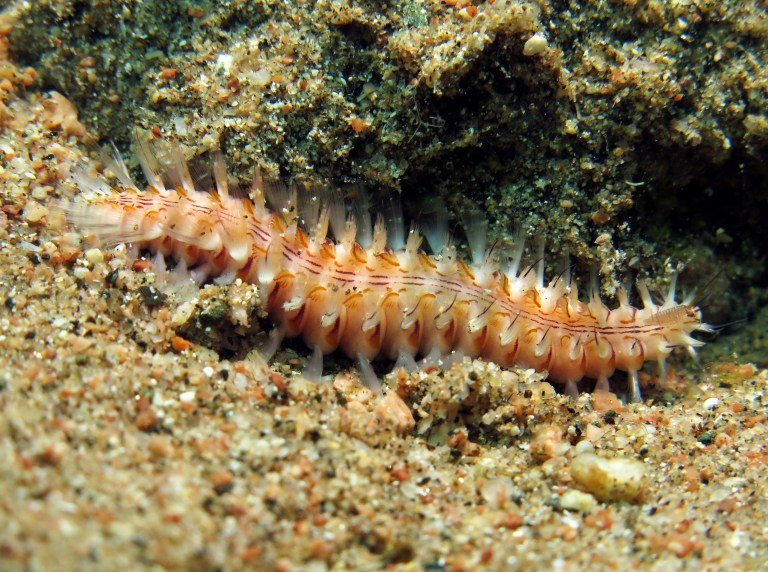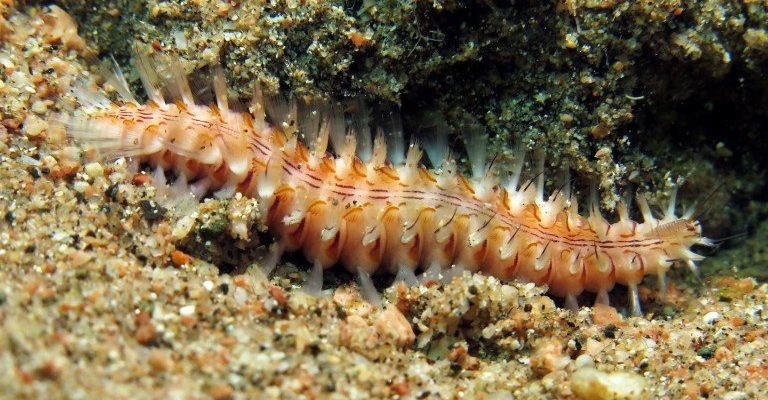
Imagine bristle worms as the ultimate multitaskers of the ocean. They do a great job of cleaning up leftovers and recycling nutrients, much like garbage collectors do in our neighborhoods. However, the notion that they might target healthy fish can raise some eyebrows. Let’s explore this topic together and uncover what really goes on between these two types of aquatic life.
Understanding Bristle Worms: What Are They?
Bristle worms, or polychaetes, are a fascinating group of segmented worms found in marine environments. They come in various shapes, sizes, and colors, but all share certain characteristics. These worms have bristles, or setae, along their bodies, which help them move and sometimes defend themselves. They thrive in many environments, from reef systems to mud flats, and they play a crucial role in the ecosystem.
Here’s the thing: not all bristle worms are created equal. Some species are more aggressive than others, leading to different interactions with fish. Most will happily munch on decaying matter, algae, and microorganisms, but some might become opportunistic feeders. This means they can take advantage of vulnerable or stressed prey, including fish. Understanding the behavior and diet of different bristle worm species can shed light on their relationship with fish.
In most cases, bristle worms are harmless, but there are exceptions. If a fish is injured or sick, it might attract the attention of these worms. Let’s look more closely at how healthy fish fit into this picture.
Do Bristle Worms Attack Healthy Fish?
You might be wondering whether bristle worms actually look for healthy fish to attack. The good news is that, generally speaking, they do not. Healthy fish are usually safe from these creatures, as bristle worms prefer to feast on decaying organic material rather than actively hunting. They’re like the recycling team of the ocean, cleaning up the mess rather than causing it.
However, it’s essential to understand that some species of bristle worms, especially those that grow quite large, could potentially cause harm to fish under certain conditions. For example, if a fish is stressed or injured—think of a fish that is already in a weak state—it may become a target. This passive scavenger behavior makes these worms less of a threat to thriving fish populations.
Signs of a Healthy Fish:
– Bright colors and clear eyes
– Active swimming patterns
– Good appetite and interest in food
If your fish displays these signs, it’s unlikely they’ll attract the unwanted attention of bristle worms.
What Happens When Fish Are Compromised?
In the marine world, all creatures interact, and circumstances can change. If a fish is compromised—due to illness, injury, or environmental stress—it may show signs of its weakened state. This is where the dynamic shifts. While bristle worms won’t actively hunt healthy fish, they might sniff out an easy meal if a fish is already in distress.
For example, imagine a fish that has gotten caught in a rock or a piece of coral. It may get scraped up, creating open wounds. This could attract bristle worms, which are just looking to capitalize on a vulnerable situation. It’s not an attack in the traditional sense but rather an opportunistic scavenging event.
It’s crucial to maintain a healthy aquarium environment to prevent fish from becoming stressed or injured, which helps keep these interactions at bay.
The Role of Bristle Worms in the Ecosystem
Bristle worms are often misunderstood. They play a vital role in the marine ecosystem by breaking down organic materials and recycling nutrients. This process benefits the entire aquatic community, including healthy fish. Think of bristle worms as nature’s recyclers, helping to keep the underwater environment clean and balanced.
Without these worms, dead matter would accumulate, leading to an unhealthy ecosystem. When fish and other marine animals die, bristle worms are there to clean up the aftermath. Their presence helps maintain the health of the reef or habitat, ensuring that there’s less waste in the water, which ultimately benefits fish in the long run.
In aquariums, a small population of bristle worms can be beneficial. They help keep the substrate clean and support a healthier environment for the fish and other inhabitants. But, as with all things in nature, balance is key.
How to Manage Bristle Worms in Your Aquarium
If you’re an aquarium enthusiast, you might be wondering how to manage bristle worms. While they generally won’t harm healthy fish, having too many can create an imbalanced ecosystem. Here are some steps to keep bristle worms in check:
- Maintain Good Water Quality: Regular water testing and changes can help keep your fish healthy and deter excessive bristle worm populations.
- Avoid Overfeeding: Excess food can lead to more organic waste, which bristle worms love. Only feed your fish what they can eat in a few minutes.
- Regular Cleaning: Clean the substrate and decorations in your aquarium to limit the food source available for bristle worms.
- Monitor Fish Health: Keep an eye on your fish to ensure they remain healthy, preventing them from becoming targets for opportunistic scavengers.
By managing your aquarium environment carefully, you can create a healthy system where bristle worms can exist alongside your fish without causing any issues.
Common Misunderstandings About Bristle Worms
Bristle worms often get a bad rap. Many people think they are dangerous or harmful when, in fact, they’re a natural part of the ocean ecosystem. Common misconceptions include:
- Myth: Bristle worms actively hunt healthy fish.
- Fact: They primarily scavenge and prefer to feed on decaying material.
- Myth: All bristle worms are harmful.
- Fact: Many species are beneficial and help maintain aquatic health.
By understanding these points, you can gain a more nuanced view of bristle worms and their role in the aquatic world. Educating yourself and others can help reduce fear and promote harmony in our underwater ecosystems.
In summary, bristle worms typically do not attack healthy fish. They are more about cleaning up the ocean than causing chaos. While there are exceptions when a fish is compromised, it’s crucial to maintain healthy fish and environments to minimize any potential issues.
Embracing the role of bristle worms can lead to greater aquarium health and a deeper appreciation for the complex relationships in marine life. By understanding these dynamics, you can foster a thriving underwater environment where both fish and bristle worms coexist in harmony. So next time you look into your aquarium, remember that those little worms might just be doing their job, keeping the balance of the ocean alive!

